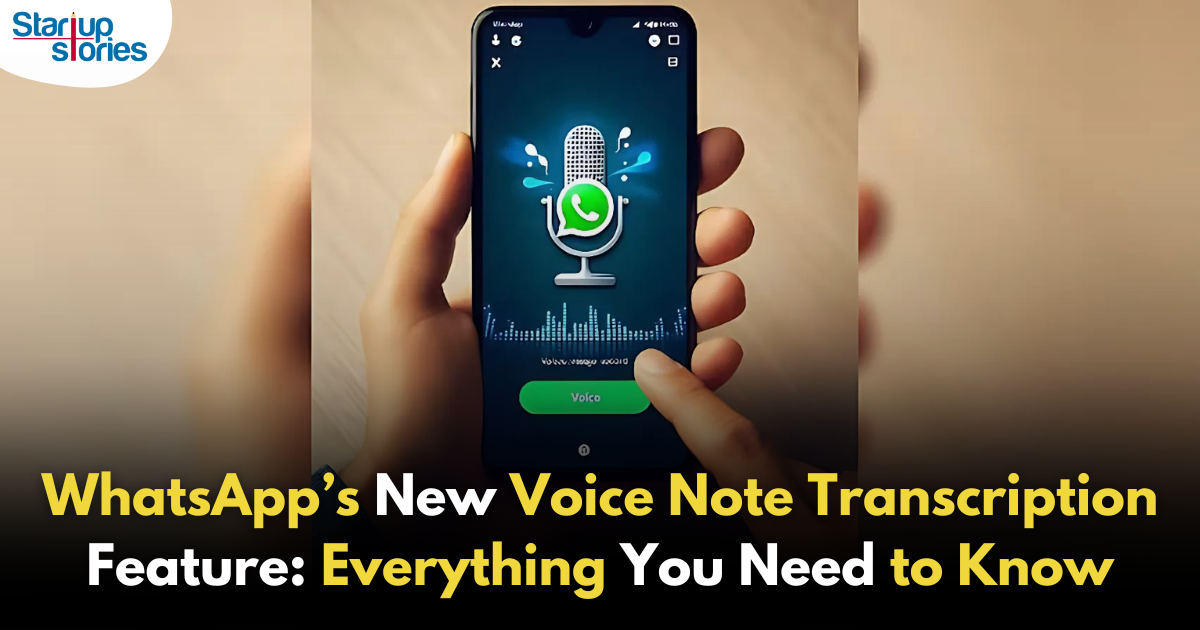How To
How To Onboard The Right Investor For Your Startup
Published
6 years agoon

Most startups begin with the founders investing a startup capital to get their business up and running. As a startup slowly refines its business model in order to complement their sales model and start generating revenue, the founders would then be focused on expanding and growing the startup. It is at this point having an investor on board would be a huge help for the health of the startup. An investor would provide the much needed capital to expand a startup and scale up the business model, in order to amplify demand and increase supply to match it. But finding an investor is not always an easy task but, there are some simple steps which can be used to maximise probability of finding the right investor.
Have A Product or Demo Ready
Investors need to know where they are investing their money and therefore they will always request a demonstration (demo) of the product before investing. Therefore, it is important to have a working demo along with the sales pitch in order for the investor to make a calculated decision.
Research on investor portfolio
It is important to research prospective investors as in what kind of portfolios they have invested their money. Learning about an investor portfolio gives an insight into the health of an investment company. If an investor has experience with handling similar startups to yours in the past, they would be able to provide guidance and mentorship. However, the most important reason for research is to see if the investors have a similar kind of startup in their portfolio, which would mean the investor would be reluctant to invest because the startup in question would be a direct competitor to your startup.
Finding a mentor and a core team
A mentor in this case is someone who has prior experience navigating the choppy waters of the startup industry. FInding a mentor will be invaluable in the long run as a mentor brings their experience to the forefront and would be able to guide the founders by nudging them in the right direction. A good mentor will also be able to attract investors through their network as well. A core team should consist of skills not just from the technical side but also from the business and revenue perspective. A good example here would be Larry Ellison, the founder of Oracle and Marc Benioff, founder of Salesforce. Ellison mentored Benioff during the initial days of Salesforce by providing valuable technical and business inputs and even investing in Salesforce, which paid off in multiples later on in the future. Benioff founded Salesforce while he was still working at Oracle and Larry Ellison was supportive of the endeavour so much that he let Benioff split work so that he can work on Salesforce in the mornings and at Oracle in the afternoons.
Proven Business Model
Investors are more likely to invest in a startup which would be able to show a proven business model complemented with numbers. The business model need not be elaborate and can instead focus on a small demographic which would provide a lot of valuable data useful for scalability like revenue forecasting, sales and marketing demographics, overheads, burnout rates, processes which can be automated and troubleshooting, but more importantly it offers investors a glimpse into the revenue model.
Prepare for due diligence and have documentation ready
Startups need to be ready for a due diligence check by an investor and therefore ensure they have all the documentation ready and up to date. There would be due diligence checks on various fronts. If a startup is building a software, investors will be running various scripts to check compliance and software licensing requirements. Important documentation includes product roadmap (from demo to live,) timelines, cash burnout rate and financial projections for the future among others.
A startup should have a clear goal and define specific outcomes with their investors in order to achieve the maximum output from the partnership. Onboarding investors is the first major hurdle any startup should clear and then focus on scaling up, in order to increase a startup valuation which in turn will attract more investors. Following these steps will help finetune the search to identify a potential investor which would go a long way in scaling up a startup.

How To
Google Brings AI to PDFs with “Ask about this PDF” Feature
Published
12 months agoon
January 10, 2025
Google has introduced a new AI-powered feature for its Files by Google app, allowing users to easily interact with PDF documents. The “Ask about this PDF” feature, powered by Gemini, enables users to ask questions about the document’s content directly within the app.
How it Works
Access
The feature is available in the updated Files by Google app (version 16.0.5 and above). Users can download the latest version from the Google Play Store to access this functionality.
Functionality
Users can simply tap the “Ask about this PDF” button while viewing a document. This prompts the app to allow users to ask questions regarding the PDF content, such as:
- Summaries of sections
- Clarifications on specific paragraphs
- Details about tables and charts
AI Interaction
The app leverages the power of Gemini AI to provide accurate and informative answers based on the content of the PDF. This interaction enhances user engagement by making it easier to extract relevant information without manually scrolling through lengthy documents.
User-Friendly Experience
AI-generated responses are displayed as an overlay, enabling users to view both the original PDF and the AI-generated answers simultaneously. This feature streamlines the process of obtaining information from PDFs, making it particularly useful for students and professionals who frequently work with such documents.
Availability
Gemini Advanced Required
The “Ask about this PDF” feature is currently exclusive to users of Gemini Advanced, a subscription service that provides enhanced capabilities of Google’s AI tools.
Limited to Files by Google
At present, this feature is available only within the Files by Google app. However, there are expectations that similar functionalities may be integrated into other Google applications in the future, such as Google Drive.
Future Outlook
This new feature demonstrates Google’s commitment to integrating AI seamlessly into its products and services. By enhancing the user experience with innovative tools like “Ask about this PDF,” Google aims to improve productivity and accessibility for its users.
Expansion Plans
Given the positive reception of this feature, it is likely that Google will explore expanding Gemini’s capabilities across other platforms and applications, potentially offering similar functionalities for various document types and formats.
Conclusion
Google’s introduction of the “Ask about this PDF” feature in its Files by Google app marks a significant advancement in how users interact with digital documents. By leveraging Gemini AI, Google is not only enhancing productivity but also making information retrieval more efficient and user-friendly. As AI continues to evolve, features like these are expected to play a crucial role in transforming digital workflows across various sectors.
How To
WhatsApp Introduces Voice Note Transcription: A Complete Guide to the New Feature!
Published
1 year agoon
November 23, 2024
WhatsApp is revolutionizing how users handle voice messages with the introduction of its new Voice Note Transcription feature. Designed to cater to diverse user needs, this update ensures that you never miss out on voice messages, even in situations where listening isn’t an option—be it a noisy environment, an important meeting, or simply when audio isn’t convenient.
What Is Voice Note Transcription?
The Voice Note Transcription feature converts voice messages into text, allowing users to read the content instead of listening. This thoughtful solution addresses scenarios where audio playback may not be practical. With this addition, WhatsApp enhances communication efficiency, helping users stay connected regardless of their circumstances.
How Does It Work?
Using the transcription feature is straightforward:
- Enable the Feature: Navigate to Settings > Chats > Voice Message Transcripts to enable or disable the feature and select your preferred transcription language.
- Transcribing a Voice Note: Once activated, long-press the voice message you’ve received and tap ‘Transcribe’. The app will instantly generate a text version of the audio message for you to read at your convenience.
This process is handled entirely on your device, ensuring that the voice messages remain private. Neither WhatsApp nor external servers have access to the content, maintaining the platform’s commitment to privacy.
Privacy and Security
In line with WhatsApp’s dedication to user security, the transcription process is executed locally on the device. This ensures that your voice messages are never sent to external servers, and even WhatsApp itself cannot access them. By integrating this feature while preserving its robust end-to-end encryption, WhatsApp continues to prioritize user trust.
Key Privacy Features
- Local Processing: Transcripts are generated entirely on-device, ensuring that no one else—not even WhatsApp—can access your personal messages.
- End-to-End Encryption: The feature maintains WhatsApp’s strong privacy standards, ensuring that only the sender and recipient can access their voice messages.
Global Rollout and Language Support
The Voice Note Transcription feature is rolling out globally over the coming weeks. Initially, it supports selected languages such as English, Spanish, Portuguese, Russian, and Hindi. WhatsApp has confirmed plans to expand its language offerings soon, ensuring wider accessibility for users worldwide.
Why This Feature is a Game-Changer
This new addition addresses a common pain point for WhatsApp users: handling voice messages when audio playback isn’t feasible. Whether you’re in a crowded space, attending a quiet event, or dealing with a lengthy voice note, the transcription feature provides a convenient alternative.
Benefits of Voice Note Transcription
- Multitasking Convenience: Users can skim through voice messages while juggling other responsibilities without needing headphones.
- Accessibility Improvement: The feature enhances accessibility for individuals with hearing impairments or those who prefer text-based communication over audio.
- Enhanced Communication: Merging the personal touch of voice communication with the convenience of text allows for more flexible interactions.
Conclusion
By introducing the Voice Note Transcription feature, WhatsApp continues to innovate and enhance its platform. This tool exemplifies how technology can adapt to diverse user needs while maintaining security and privacy. Keep an eye on your app settings—this feature is rolling out soon and is set to make staying connected easier than ever. As WhatsApp expands its capabilities, users can look forward to a more personalized and efficient messaging experience that caters to their evolving communication preferences.
How To
WhatsApp’s Secret Code for Locked Chats: How to Use It for Extra Privacy!
Published
1 year agoon
November 14, 2024
WhatsApp has introduced an innovative security feature known as Chat Lock, which enhances user privacy by allowing individuals to secure their personal chats from unwanted access. A key component of this update is the Secret Code option, enabling users to access locked chats through a unique code, thereby making private conversations even more discreet.
What is the Secret Code for Locked Chats?
The Secret Code feature allows users to set a custom code for their locked chats, effectively hiding them and making them accessible only through a specific search command. Instead of simply navigating to the Locked Chats folder within the app, users can assign a custom name or code that conceals these chats entirely from the main chat screen.
Once the Secret Code is established, users can easily search for it within the app to access their hidden chats. If someone attempts to enter an incorrect code, the locked chats will remain invisible, adding an extra layer of security.
Steps to Set Up a Secret Code for Locked Chats on WhatsApp
If you want to enhance the security of your chats with a Secret Code, follow this step-by-step guide:
- Lock Your Chats:
-
-
- Select the chat you wish to lock.
- Tap the three dots in the top-right corner and choose Lock Chat.
-
- Access the Locked Chats Folder:
-
-
- After locking some chats, open WhatsApp and navigate to the Locked Chats folder.
-
- Set the Secret Code:
-
-
- Tap the three dots in the top-right corner of the Locked Chats screen and select Chat Lock Settings.
- Choose the Secret Code option.
- Enter a memorable code of your choice (this can include words or emojis).
- Tap Next, re-enter your code to confirm, and then tap Done to save your code.
-
- Hide Locked Chats:
-
- To make locked chats less visible, go back to the Chat Lock Settings page and toggle on Hide Locked Chats.
Important Considerations
- Code Access: After setting up your Secret Code, you will need to enter it each time you want to access your hidden chats.
- Privacy Caution: If someone knows your Secret Code, they can unlock your chats.
- Code Retrieval: If you forget your Secret Code, there is no recovery option unless you have a backup of your chats.
Benefits of Using the Secret Code Feature
The introduction of the Secret Code significantly enhances privacy for WhatsApp users. It allows individuals to keep sensitive conversations hidden from prying eyes, making it particularly useful for those who share their devices or are concerned about unauthorized access. This feature is ideal for various scenarios, such as discussing personal matters or planning surprises without fear of being discovered.
Conclusion
With its new Secret Code feature for locked chats, WhatsApp has taken a significant step toward enhancing user privacy and security. By allowing users to hide their sensitive conversations behind a customizable code, WhatsApp provides an effective solution for those looking to keep their communications confidential. As digital privacy becomes increasingly important, features like these empower users to take control over their personal information and interactions within the app.
Recent Posts
- How Pronto Is Redefining 10-Minute Home Services in India with a $25 Million Fundraise
- Bhavish Aggarwal Sells ₹325 Crore Ola Electric Stake, Retains Control
- T.N. Seshan: The Fearless Reformer Who Redefined Indian Democracy
- Kuku FM’s $200 Million IPO: Mebigo Labs Hires Top Bankers to Lead Public Listing
- Google Launches Startup Hub in Hyderabad to Boost India’s Innovation Ecosystem
- Indian Man Quits JPMorgan, Takes 70% Pay Cut to Launch $6 Million Startup
- Zerodha Reports 23% Profit Decline in FY25 as Revenues Miss Target
- Zoho Pay Debuts as India’s New UPI Challenger, Taking on PhonePe, Paytm, and Google Pay
- Meta Expands AI-Powered Reels Translation to Hindi and Portuguese, Enhancing Global Creator Reach
- Dunzo’s Collapse: Reliance’s ₹1,645 Crore Loss Signals Challenges in India’s Hyperlocal Delivery Market
- Zoho Arattai vs WhatsApp: 5 Reasons India’s Homegrown Messenger Is Winning in 2025
- BMW’s New Logo Debuts Subtly on the All-Electric iX3: A Modern Evolution
- iPhone 17 India Price, Features & Availability: All You Need to Know
- Apple’s iOS 18.7 vs iOS 26: Which Update Should You Choose for Your iPhone in 2025?
- Deep-Tech Startup EndureAir Raises INR 25 Crore from IAN Alpha Fund to Boost Drone Innovation
- Venture Catalysts Raises Rs 150 Crore to Boost Multi-Stage VC Platform and AI Capabilities
- U.S. AI Startup Anthropic Expands Global Ban to Tackle Chinese Tech Influence
- Apple Achieves 13% Growth in India with $9 Billion Sales and New Flagship Stores in FY25
- OYO Achieves Record Profitability in FY25 with Deferred Tax Boost and New Corporate Identity
- MPL to Lay Off 60% of India Workforce Following Online Gaming Ban

How Pronto Is Redefining 10-Minute Home Services in India with a $25 Million Fundraise

Bhavish Aggarwal Sells ₹325 Crore Ola Electric Stake, Retains Control












Oezhnhcy
May 25, 2025 at 6:08 pm
Explore the ranked best online casinos of 2025. Compare bonuses, game selections, and trustworthiness of top platforms for secure and rewarding gameplaycasino.
9p2ym
June 4, 2025 at 12:37 am
get generic clomiphene without rx generic clomid 100mg buying clomiphene pill can you buy generic clomid pills order clomid prices buying clomid tablets where can i buy generic clomiphene pill
cheap cialis brand
June 9, 2025 at 11:07 am
This website positively has all of the tidings and facts I needed there this participant and didn’t positive who to ask.
do you need prescription for flagyl
June 11, 2025 at 5:24 am
Greetings! Jolly useful advice within this article! It’s the scarcely changes which choice turn the largest changes. Thanks a a quantity in the direction of sharing!
5b3lh
June 13, 2025 at 2:42 am
order zithromax sale – order tetracycline online cheap how to buy metronidazole
lpj6l
June 14, 2025 at 2:29 pm
buy rybelsus tablets – periactin 4mg generic buy cheap periactin
yn0zt
June 16, 2025 at 1:57 pm
buy motilium without a prescription – order flexeril 15mg generic cyclobenzaprine 15mg price
j6iax
June 18, 2025 at 1:49 pm
buy inderal without prescription – buy inderal without a prescription methotrexate oral
p6kbl
June 21, 2025 at 11:30 am
buy generic amoxicillin for sale – buy valsartan medication ipratropium brand
g1iiq
June 23, 2025 at 2:35 pm
buy zithromax 500mg for sale – how to buy bystolic nebivolol online order
mvnjv
June 25, 2025 at 1:36 pm
buy generic clavulanate – atbioinfo.com how to buy acillin
cyarv
June 27, 2025 at 6:39 am
buy esomeprazole pill – anexamate order nexium 40mg capsules
2n19k
June 28, 2025 at 4:22 pm
warfarin 2mg canada – anticoagulant cozaar tablet
64dsr
June 30, 2025 at 1:40 pm
buy generic mobic over the counter – moboxsin order mobic for sale
rbpd6
July 2, 2025 at 11:27 am
oral prednisone 20mg – apreplson.com prednisone 40mg sale
4tzsr
July 3, 2025 at 2:43 pm
buy ed medication – site mens erection pills
ao359
July 5, 2025 at 2:06 am
amoxicillin price – amoxicillin uk cheap amoxil online
3907o
July 10, 2025 at 6:49 pm
buy fluconazole online – https://gpdifluca.com/ purchase fluconazole online
f2usj
July 12, 2025 at 6:55 am
buy cenforce generic – https://cenforcers.com/# cenforce online
qgut1
July 13, 2025 at 4:46 pm
does medicare cover cialis – https://ciltadgn.com/ generic cialis
ConnieTef
July 14, 2025 at 9:36 pm
cheap ranitidine 150mg – click buy zantac 150mg generic
70edv
July 15, 2025 at 7:09 pm
buy cialis overnight shipping – on this site what doe cialis look like
ConnieTef
July 17, 2025 at 5:05 am
The depth in this piece is exceptional. donde comprar kamagra en espaГ±a
fxjr0
July 17, 2025 at 11:24 pm
viagra cheap overnight – strong vpls how to order viagra online from india
ConnieTef
July 20, 2025 at 12:42 am
Greetings! Extremely productive par‘nesis within this article! It’s the crumb changes which wish turn the largest changes. Thanks a lot in the direction of sharing! glucophage online order
d1y35
July 20, 2025 at 1:18 am
More content pieces like this would create the web better. https://buyfastonl.com/amoxicillin.html
rlkxu
July 22, 2025 at 5:27 pm
I’ll certainly bring back to skim more. https://prohnrg.com/product/get-allopurinol-pills/
ConnieTef
August 5, 2025 at 6:02 am
More text pieces like this would create the интернет better. https://ondactone.com/product/domperidone/
ConnieTef
August 8, 2025 at 3:02 am
This website absolutely has all of the low-down and facts I needed to this participant and didn’t identify who to ask.
tamsulosin cost
ConnieTef
August 15, 2025 at 2:59 pm
I couldn’t weather commenting. Profoundly written! https://lzdsxxb.com/home.php?mod=space&uid=5065790
ConnieTef
August 21, 2025 at 8:44 pm
buy dapagliflozin 10mg – this buy dapagliflozin 10mg online cheap
ConnieTef
August 24, 2025 at 8:55 pm
cost orlistat – https://asacostat.com/# buy xenical 120mg online cheap
ConnieTef
August 30, 2025 at 10:12 am
More posts like this would persuade the online time more useful. http://wightsupport.com/forum/member.php?action=profile&uid=22038
Jfkprak
October 8, 2025 at 6:32 pm
You can protect yourself and your stock by way of being heedful when buying medicine online. Some druggist’s websites manipulate legally and provide convenience, privacy, bring in savings and safeguards as a replacement for purchasing medicines. buy in TerbinaPharmacy https://terbinafines.com/product/medrol.html medrol
pckm1
October 11, 2025 at 12:12 pm
Thanks on putting this up. It’s okay done. coumadin cheap
online casinos usa
October 13, 2025 at 2:13 pm
More posts like this would prosper the blogosphere more useful.
Kuwin
November 6, 2025 at 1:19 am
kuwin sở hữu kho game đa dạng từ slot đến trò chơi bài đổi thưởng, mang đến cho bạn những giây phút giải trí tuyệt vời.
iwin
November 8, 2025 at 3:20 pm
iwin – nền tảng game bài đổi thưởng uy tín, nơi bạn có thể thử vận may và tận hưởng nhiều tựa game hấp
站群程序
November 9, 2025 at 9:19 am
搭载智能站群程序,自动化搭建与管理,为SEO项目提供核心驱动力。站群程序
站群程序
November 11, 2025 at 8:28 pm
采用高效谷歌站群策略,快速提升网站在搜索引擎中的可见性与权重。谷歌站群
MM88
November 16, 2025 at 3:08 pm
Với giao diện mượt mà và ưu đãi hấp dẫn, MM88 là lựa chọn lý tưởng cho các tín đồ giải trí trực tuyến.
GO88
November 21, 2025 at 2:09 am
Tham gia cộng đồng game thủ tại Go88 để trải nghiệm các trò chơi bài, poker phổ biến nhất hiện nay.
MM88
November 24, 2025 at 8:11 am
Khám phá thế giới giải trí trực tuyến đỉnh cao tại MM88, nơi mang đến những trải nghiệm cá cược thể thao và casino sống động.
J88
November 30, 2025 at 1:12 pm
Đến với J88, bạn sẽ được trải nghiệm dịch vụ cá cược chuyên nghiệp cùng hàng ngàn sự kiện khuyến mãi độc quyền.
1win
December 12, 2025 at 4:44 pm
https://t.me/be_1win/60
1win
December 12, 2025 at 4:44 pm
https://t.me/be_1win/306
AtomCasino
December 13, 2025 at 6:52 am
https://t.me/s/atom_official_casino
Casino
December 14, 2025 at 2:17 pm
https://t.me/s/official_pokerdom_pokerdom
kazino_s_minimalnym_depozitom
December 19, 2025 at 11:18 am
https://t.me/s/Kazino_s_minimalnym_depozitom
Ezcash_Officials
December 20, 2025 at 5:30 pm
https://t.me/s/Ezcash_Officials